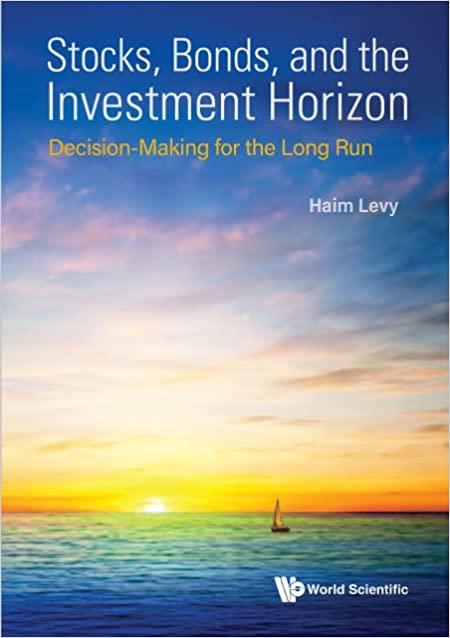Question
1. If an investor borrows money to invest in risky portfolio, where will the combination portfolio (the leveraged portfolio) be positioned? a. Above the CAL
1. If an investor borrows money to invest in risky portfolio, where will the combination portfolio (the leveraged portfolio) be positioned? a. Above the CAL b. Below the CAL c. On the CAL to the left of risky portfolio d. On the CAL to the right of risky portfolio
2. An investors utility function for expected return and risk is U = E(r)4^2. Which of the following would this investor prefer to invest in? a. a risk-free security oering a return of 8 percent per year b. a risky portfolio with expected return of 14 percent per year and standard deviation of 25 percent per year
3. Cathy Chu has $10,000 in a savings account that guarantees her a return of 5% per year. Cathy was oered an investment opportunity that has an expected return of 5% but possible returns range from 30% to 40%. Cathy declined the investment opportunity in favor of her savings account. Cathy is
a. risk adverse b. risk avoider c. risk intolerant d. risk averse
Step by Step Solution
There are 3 Steps involved in it
Step: 1

Get Instant Access to Expert-Tailored Solutions
See step-by-step solutions with expert insights and AI powered tools for academic success
Step: 2

Step: 3

Ace Your Homework with AI
Get the answers you need in no time with our AI-driven, step-by-step assistance
Get Started


